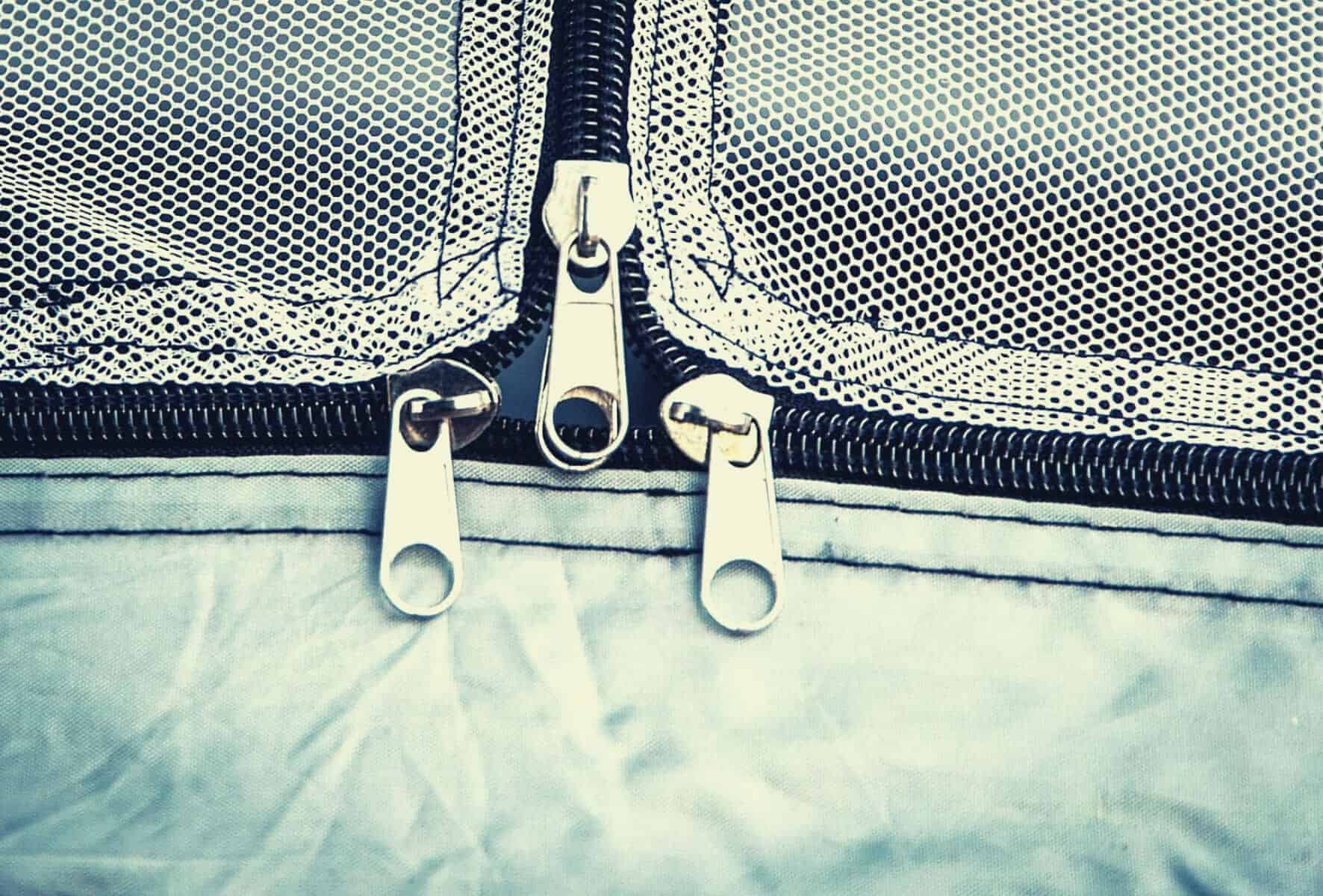The term ‘taped seams’ is one that you’ve likely come across when browsing the technical specifications of different types of outdoor products, from tents and tarps to shell jackets and waterproof pants.
In this article, we give you the lowdown on what seam taping is and why it’s something worth having.
If your own tent is in need of some TLC then we recommend checking out our guide to the best tent seam sealers, and bring her back to her former glory.
Tent Seams: A Problematic Area
In a few words, taping the seams on outdoor equipment—most commonly tents and wet-weather gear—is a means of improving their waterproofing capacity. In most cases, the use of taped seams can be taken as a guarantee of quality and solid waterproofing throughout a tent.
Seams are the one area in the fabric of a tent or garment (besides the openings or zippers, that is) where the material is discontinuous and stitching is required, which makes them the most vulnerable to leaks.
Stitching leaves every seam in your tent pocked with hundreds of tiny needle holes through which water can pass. Before the advent of seam taping, many outdoors-goers applied water-resistant oils or wax along the seams to reduce the risk of leaks but these days advances in technology spare us the trouble of lubing up our seams on an annual basis, with most 2-4 season tents on the market using some type of taped seam.
How Seam Taping is done
Seam taping happens during the production process by applying a thermoplastic tape to the seam under heat and pressure, in effect melting the tape over the seams to form a hydrophobic, water-tight seal.
Sadly, taping seams at home is a particularly tricky business and requires a specialized machine that will melt the tape whilst leaving the fabric intact. That said if your taped seams wear down or fray over time you can easily renew the seal with a silicone or urethane-based sealant*, both of which can be purchased online or in outdoor stores.
*Be sure to use the correct sealant for your tent fabric: silicone-based sealants (like Gear Aid Seam Grip SIL) should be used on silicone-treated tents and urethane-based sealants (like Gear Aid Seam Grip FC) on polyurethane(PU)-treated tents.
Types of Taped Seams
Believe it or not, there are three types of sealed seams used on outdoor tents and garments:
Critically taped
This means that only certain seams or parts of seams are sealed, usually those located in the most vulnerable or leak-prone areas of your tent. (These are also known as “common fail seams.”) As a general rule, this type of seal seaming is fairly shoddy and should be avoided if you wish to have the best weather protection available.
Fully taped
As the name suggests, tents with fully taped seams use tape on every seam throughout the tent and, as such, are the most leak-proof.
Welded seams
Seam welding is an alternative to taping that fuses two pieces of fabric together by applying heat and pressure, resulting in what looks like a single, continuous surface. This process not only eliminates the need for sealing tape, but also for stitching and, thus, holes.
More commonly found in outdoor garments, this style of seam sealing is becoming more popular in tent production, mainly because the welds or bonds can be even stronger than the original material and create both durable and abrasion-resistant seals that don’t deteriorate as quickly as tapes.

